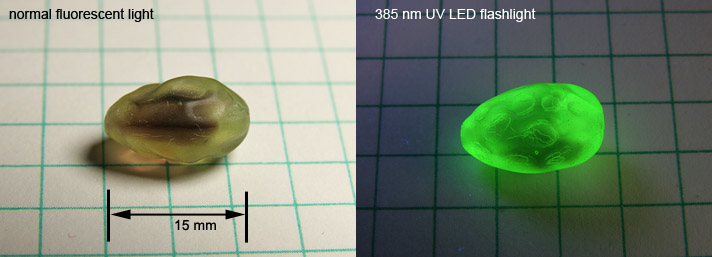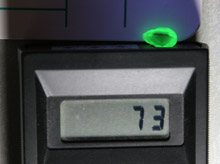Most things in a typical
house are not radioactive, so it may be difficult to tell if the geiger
counter is actually measuring something, or just clicking at random.
One possibility is a
gas
lamp mantle (contains thorium), although
many mantles sold now use non-radiative alternatives. There is
a type of yellowish-green glass called
vaseline
glass
which
has small amounts of uranium oxide as a coloring agent, and
consequently is somewhat radioactive. I was able to locate some of this
material at a local bead store by shining a
UV
flashlight on the trays
of beads. The uranium ions
give this type of glass a strong fluorescent response in UV.
Putting
the bead (shown above) directly against the alpha window on the
Radalert
counter gives about 70-80 cpm, where the local background is around 12
cpm. This is a very weak radioactive source, and is not a
significant health hazard. The count falls off to the
background
level when the bead is moved more than 1 cm away from the counter
window.













